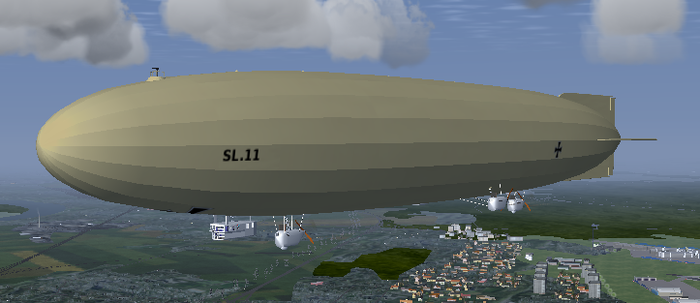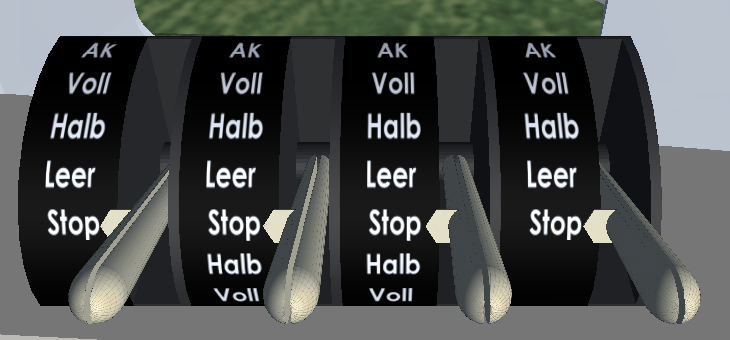Schütte-Lanz SL 11

Description
Build in 1916 this Army airship was based at Spich near Cologne. Commanded by Hauptmann Wilhelm Schramm. The first German airship to be shot down over Britain.
- First Flight: August 1, 1916
- Length: 174 metres (571 ft)
- Diameter: 20.1 metres (66 ft)
- Gas Capacity: 38,780 cubic meters
- Performance: 91.8 km/h
- Payload: 21 tonnes
- Engines: 4 Maybach 960 hp/716 kW total
Download
Schütte-Lanz SL 11 Size 4.1Mb
Pilot Notes
Gas valve controls
- F/f - Open/close the gas valves of the fore gas cells.
- G/g - Open/close the gas valves of the aft gas cells.
Rigid airships like SL 11 take-off light in a static maneuver and normally land weighed-off to slightly heavy in a static maneuver. The primary use for the gas valves is to reduce static lightness when needed.
Ballast controls
- w - Show current on-ground weight. Only works when on the ground.
- W - Weigh off to neutral by adding/removing ballast. Takes about 10 seconds and is only applicable when on the ground.
- e/d - Shift trim ballast fore/aft.
- E/D - Drop one quick-release (a.k.a. emergency) ballast bag fore/aft. There are 6 bags fore and 4 aft.
- Ctrl+W - Refill the quick-release ballast bags from the trim ballast.
Ground crew
- Y - Tell ground crew to let go.
- U - Request ground crew to prepare for landing.
- Ctrl + click on terrain - Place the ground crew.
Weapons
- b - Open/close bomb bays.
- j - Select next Bomb.
- J - Drop selected Bombs.
Engine Controls
Engines are controlled with the "Machine Telegraph".

There is no need for the usual key commands. To start the engine just click on the "Leer" text left to the lever. The left
part of the lever will jump into position. When the command is executed (Engine started or throttle changed) the right part
of the lever will jump into position.
Engines are arranged from left to right, the fore engine is on the far left, then comes the left side engine, next comes then
right side engine and finally the aft engine.
Note: you will not be able to switch into "AK" mode permanently below 6000 ft altitude.
Back